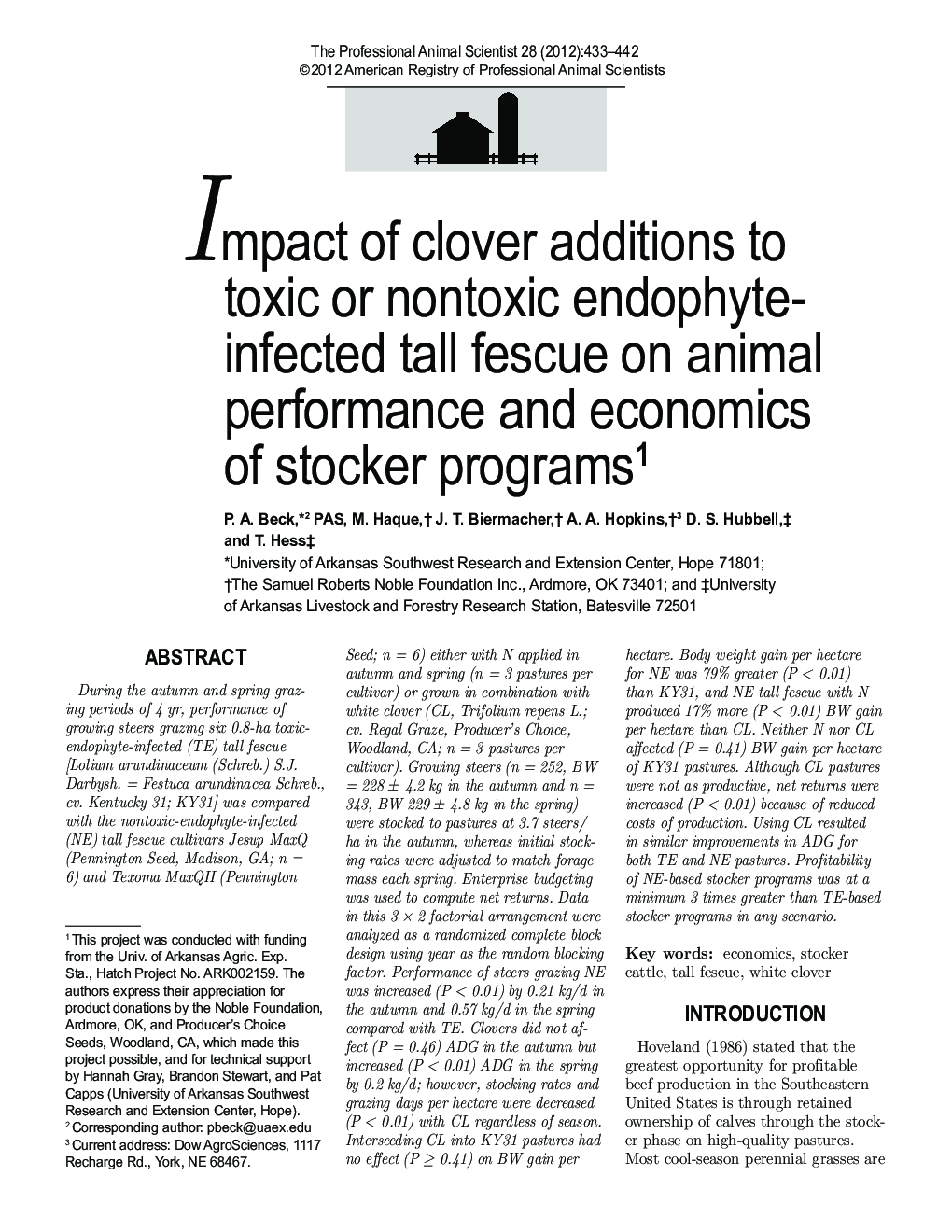| Article ID | Journal | Published Year | Pages | File Type |
|---|---|---|---|---|
| 2454126 | The Professional Animal Scientist | 2012 | 10 Pages |
Abstract
Seed; n = 6) either with N applied in autumn and spring (n = 3 pastures per cultivar) or grown in combination with white clover (CL, Trifolium repens L.; cv. Regal Graze, Producer's Choice, Woodland, CA; n = 3 pastures per cultivar). Growing steers (n = 252, BW = 228 ± 4.2 kg in the autumn and n = 343, BW 229 ± 4.8 kg in the spring) were stocked to pastures at 3.7 steers/ ha in the autumn, whereas initial stocking rates were adjusted to match forage mass each spring. Enterprise budgeting was used to compute net returns. Data in this 3 à 2 factorial arrangement were analyzed as a randomized complete block design using year as the random blocking factor. Performance of steers grazing NE was increased (P < 0.01) by 0.21 kg/d in the autumn and 0.57 kg/d in the spring compared with TE. Clovers did not affect (P = 0.46) ADG in the autumn but increased (P < 0.01) ADG in the spring by 0.2 kg/d; however, stocking rates and grazing days per hectare were decreased (P < 0.01) with CL regardless of season. Interseeding CL into KY31 pastures had no effect (P ⥠0.41) on BW gain per hectare. Body weight gain per hectare for NE was 79% greater (P < 0.01) than KY31, and NE tall fescue with N produced 17% more (P < 0.01) BW gain per hectare than CL. Neither N nor CL affected (P = 0.41) BW gain per hectare of KY31 pastures. Although CL pastures were not as productive, net returns were increased (P < 0.01) because of reduced costs of production. Using CL resulted in similar improvements in ADG for both TE and NE pastures. Profitability of NE-based stocker programs was at a minimum 3 times greater than TE-based stocker programs in any scenario.
Related Topics
Life Sciences
Agricultural and Biological Sciences
Animal Science and Zoology
Authors
P.A. PAS, M. Haque, J.T. Biermacher, A.A. Hopkins, D.S. Hubbell, T. Hess,
